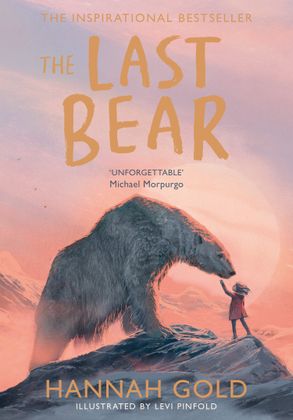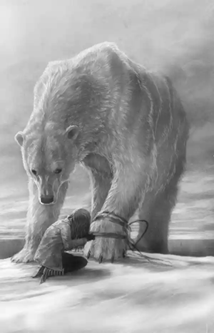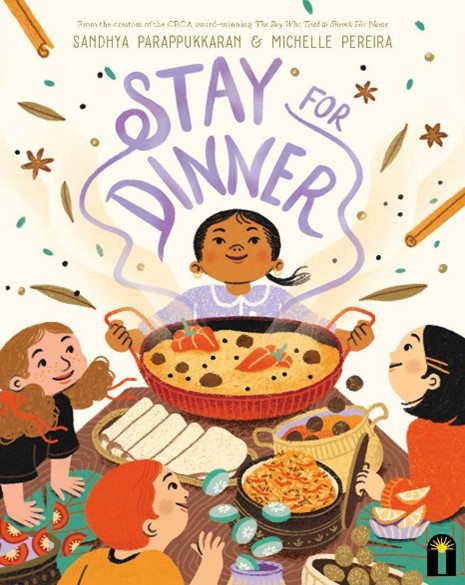What I’m reading this month to plan teaching and learning experiences
By Carrie Alker, AISNSW Education Consultant: K-6 Curriculum and Pedagogy
"All she needed now was to find her polar bear…"
As a Primary Education Consultant with a passion for children’s literature, I love to spend time perusing my local bookstore shelves, searching for quality texts. As well as reading these for enjoyment, I am always considering how I can utilise them to engage students and meet the outcomes and content of the English K-6 syllabus.
This month, I have been captivated by The Last Bear by Hannah Gold. Winner of the prestigious Waterstones Children's Book Prize and The Blue Peter Book Award in the UK, The Last Bear tells the tale of April, a young girl who forms an unlikely bond with a polar bear. Gold’s stunning language and rich characterisation weave a story that I’m sure will resonate with teachers and students alike. With themes of climate awareness and friendship, The Last Bear may be suitable for students in Years 5 and 6. This book could be utilised as a wonderful stimulus for addressing outcomes and content from multiple focus areas from the NSW English syllabus.
Read on to discover ideas for addressing Stage 3 syllabus outcomes and content using this gorgeous book.

"Bear sniffed again and his face was full of such a keen yearning that his whole body trembled this time. Very slowly, he took one tentative step forward, then another, until finally, he took the third and last step and, without once taking his brown eyes off April, he gobbled the oat biscuit all up…"
READING COMPREHENSION
Bring subject vocabulary, technical vocabulary, background knowledge and conceptual knowledge to new reading tasks (EN3-RECOM-01)
In The Last Bear, Hannah Gold highlights the plight of polar bears in the Arctic, who are facing separation from their preferred hunting grounds due to melting sea ice. If students are provided with relevant background information prior to the reading of this book, they will be able to bring this knowledge to their reading and understand the text on a deeper level. Share informative texts with students, such as the UCAR article, 'Polar Bears on Thin Ice' and have them ascertain the key message.
While reading the book, ask students to apply their gained understanding to elements of the text, such as;
‘Polar bears are mostly marine animals and they use the ice caps as a hunting ground to catch seals. But now the ice caps are melting it means they can’t travel as far as they used to. That’s why the polar bear population is dropping.’ (pgs. 49-50)
‘If the ice caps around here have melted, does that mean a bear can never get back to Bear Island?’ (pg. 50)
Pose questions to students that will allow them to articulate how they have drawn on background knowledge to better comprehend the ideas presented in The Last Bear. Students could also complete a cause-and-effect graphic organiser to demonstrate their understanding.

Illustration: Levi Pinfold
Reflect on personal connections with a text and identify how interests and experiences can influence understanding and appreciation of ideas presented (EN3-RECOM-01)
The Last Bear provides multiple opportunities for students to consider how they might personally connect with the text. In terms of her characteristics, the protagonist has a strong affinity with animals, and due to her relationship with her father and the loss of her mother, she feels isolated and lonely until she meets the bear. Students could consider their connections to April; for example, times when they have felt isolated, or on the flipside, when have they experienced a connection to a person or animal and how this made them feel.
Discussion and written responses could also be framed so that students consider how they connect with the main messages of the book in relation to their interests and experiences. How might someone who is passionate about climate awareness react to the messages in this story? How might someone who values their special connection with animals relate to this story?
CREATING WRITTEN TEXTS
Vary sentence structures or lengths when using simple, compound and complex sentences, with a focus on achieving clarity and effect suited to text purpose (EN3-CWT-01)
The Last Bear would make a wonderful mentor text for student writing and is perfect for showing how specific textual features are crafted. When creating texts for imaginative purposes, authors need to consider their use of sentence structures or lengths to increase reader engagement and achieve clarity.
Provide students with the following extract from the text:
"This wasn’t his home.
"The more April thought about it, the more it became clear that he couldn’t possibly stay here. But what to do about it? The answer, she decided one sleepless night, lay in discovering how he had ended up on the island in the first place." (pg. 169)
Even within this short extract, Hannah Gold uses a range of sentence structures to achieve clarity and effect suited to the purpose of her writing. Teachers could highlight this to students in the following ways:
"This wasn’t his home." is a simple sentence. It consists of a subject ("This") and a predicate ("wasn’t his home"), and it expresses a complete thought.
The sentence "The more April thought about it, the more it became clear that he couldn’t possibly stay here" is a complex sentence. It contains an independent clause ("The more April thought about it, the more it became clear") and a dependent clause ("that he couldn’t possibly stay here"). Additionally, it includes a comparative structure ("the more...the more") to show increasing clarity or understanding as April thinks more about the situation.
The sentence "But what to do about it?" is an interrogative sentence. It poses a question, asking for information or direction about the situation.
Students could then be provided with picture prompts or sentence stems to create their own sentences, utilising any or all of the above sentence structures.

Illustration: Levi Pinfold
UNDERSTANDING AND RESPONDING TO LITERATURE
Identify core social, personal and moral messages within and between texts (EN3-UARL-01)
“With a loud enough roar, I know we can make a difference”
The Last Bear addresses themes of friendship, empathy, environmental conservation, and the impact of human actions on wildlife. One of the key messages of the book is the importance of understanding and respecting nature, and the need to protect and preserve endangered species and their habitats.
Through the story of April and her bond with the last polar bear on a remote island, the book encourages readers to consider the interconnectedness of all living beings and to take action to safeguard the natural world for future generations. It also highlights the power of empathy and individual actions in making a positive difference in the world.
Stage 3 students could explore these themes using ‘Headlines’ or ‘+1 Routine’ from Harvard’s Project Zero.
This book is available for purchase from suppliers recommended at Harper Collins Australia
Next time, I will be sharing teaching ideas for K-2, using the wonderful book, Stay for Dinner, by Sandhya Parappukkaran.

MORE SUPPORT FOR STAGE 3 READING
Explore more ways to engage your Stage 3 students with reading by registering for Understanding and Responding to Literature 3-6
For in-school support or consultancy queries, contact Carrie Alker, AISNSW Education Consultant: K-6 Curriculum and Pedagogy
